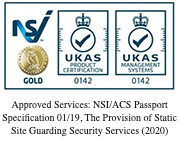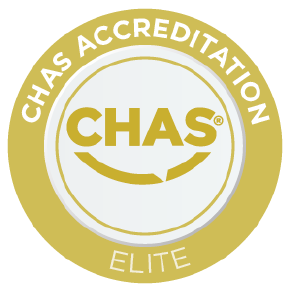Security Standards: Security Dogs
In October this year, the BSI launched a revised edition of BS 8517, the standards that lay out recommendations for the operational use of security dogs.
The new standards detail how and when security dogs can be utilised in the field, with Part One covering security dogs in general and Part Two focusing on dogs used for detection. We’ll be discussing the two types of roles you can expect security dogs to carry out and why the new standards are being introduced.
The Roles of Security Dogs
Security dogs are used generally in a mix of patrolling assignments and manned security services. They can guard important areas such as commercial premises, building sites and open spaces. In particular, these dogs are especially useful when a lone security officer may be at risk or the site is overly large.
More often than not, the presence of a fully trained security dog and handler are enough to act as a visual deterrent to potential intruders. Security dogs on patrols are also more capable than their human handlers to detect wrong-doers via smell, sight or sound.
‘Detection dogs’, referred to in Part Two of the new standards, are also known as ‘sniffer dogs’. These dogs are exceptional at detecting illicit substances and items such as munitions and firearms, explosives, illegal drugs, blood and worse. Detection dogs used in security are not the same as the ones used in rescue operations, which have their own set of operational standards.
BS 8517 – The New Security Dog Standards
By establishing a universal best practice and operational guideline for the use of security dogs in the field, the BS 8517 standards provide an effective way to ensure the complete wellbeing of the animals used and the utter security of a premises.
There are guidelines dealing with issues of kenneling, health and welfare, and equipment among other things, but there are also guidelines detailing adequate training procedures. All aspects of the dog’s life, both in work and out of it, are accounted for by the standards, ensuring their full wellbeing at all times.
The new standards have been chaired by the International Professional Security Association and the review panel is made up predominantly of members from the National Association of Dog Users. As a result, you can rest assured that these standards are of the highest order.
By publishing these guidelines, the hope is that the estimated 5,000 security dogs used throughout the UK will see an improvement to their work environment. Likewise, it will ensure that they are of excellent temperament and that above all they are well trained and disciplined.
Omni Security uphold the highest security standards laid out in the UK, and we take great pride in ensuring that our security dog services are top notch. Therefore, we have gone to great lengths to ensure our security dogs are both well-trained and looked after properly, all in accordance with the BS 8517 standards.
Combined with our outstanding and dedicated ethos adopted by all of our security officers, no one is better placed than us to provide you with effective security dog services throughout London and the country.
Omni Security provide only the highest quality specialist security in the field. We are market leaders in an array of services, from canine security to mobile security, licensed officers to alarm response.
We understand that every client is unique and therefore so are their security requirements, which is why we tailor our services to provide effective security solutions throughout the country.
For more information about how Omni Security can help you secure your premises, contact our friendly team today.
The original version of this article by BSI appeared in issue 3 of Spectrum Magazine and can be found on page 28 here.






